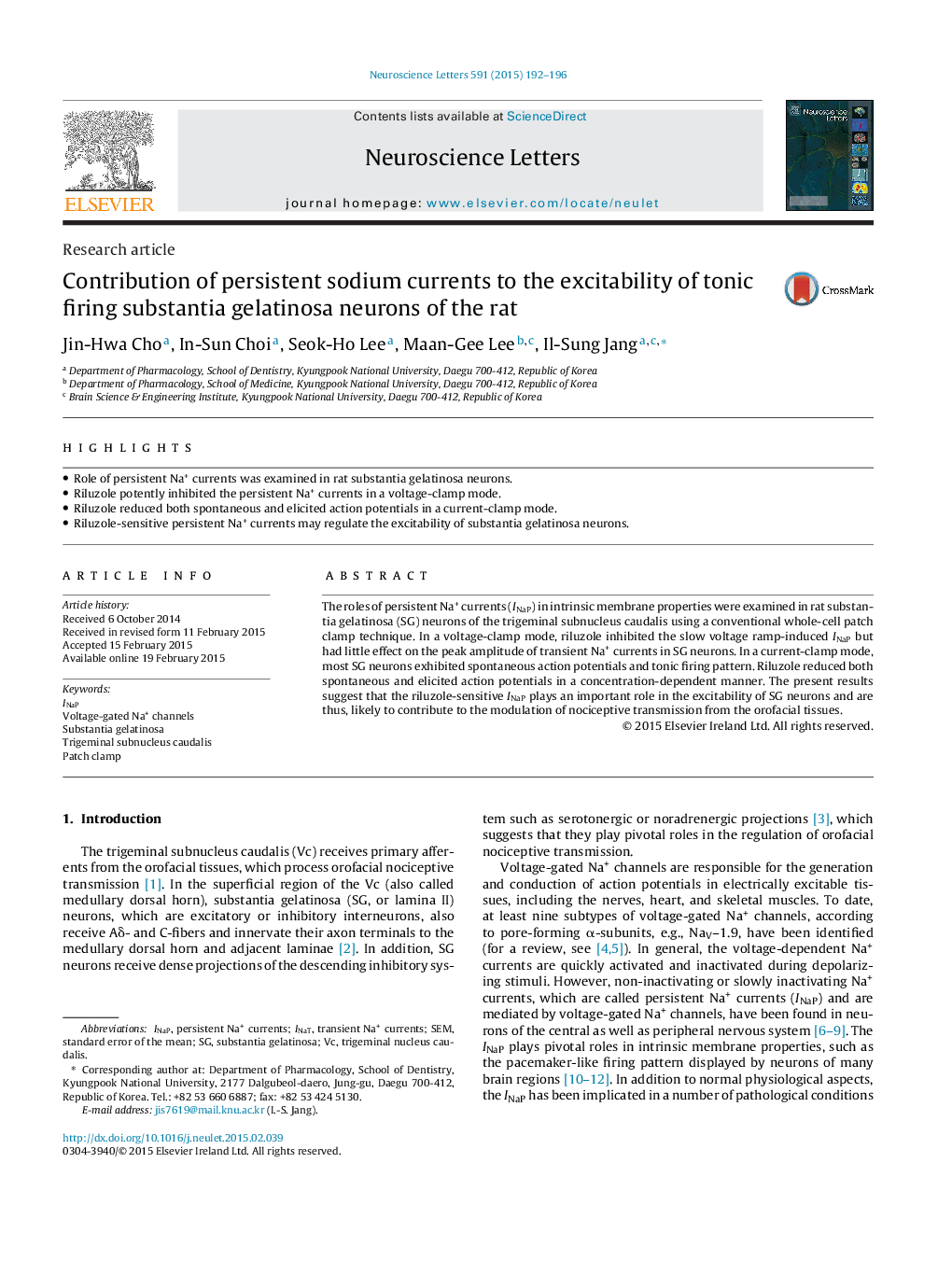| Article ID | Journal | Published Year | Pages | File Type |
|---|---|---|---|---|
| 6280924 | Neuroscience Letters | 2015 | 5 Pages |
â¢Role of persistent Na+ currents was examined in rat substantia gelatinosa neurons.â¢Riluzole potently inhibited the persistent Na+ currents in a voltage-clamp mode.â¢Riluzole reduced both spontaneous and elicited action potentials in a current-clamp mode.â¢Riluzole-sensitive persistent Na+ currents may regulate the excitability of substantia gelatinosa neurons.
The roles of persistent Na+ currents (INaP) in intrinsic membrane properties were examined in rat substantia gelatinosa (SG) neurons of the trigeminal subnucleus caudalis using a conventional whole-cell patch clamp technique. In a voltage-clamp mode, riluzole inhibited the slow voltage ramp-induced INaP but had little effect on the peak amplitude of transient Na+ currents in SG neurons. In a current-clamp mode, most SG neurons exhibited spontaneous action potentials and tonic firing pattern. Riluzole reduced both spontaneous and elicited action potentials in a concentration-dependent manner. The present results suggest that the riluzole-sensitive INaP plays an important role in the excitability of SG neurons and are thus, likely to contribute to the modulation of nociceptive transmission from the orofacial tissues.
